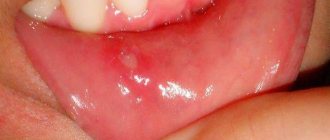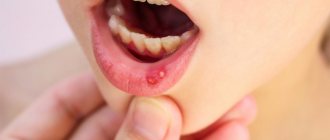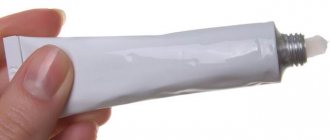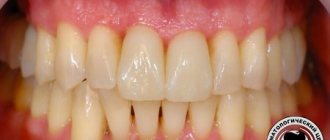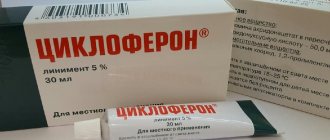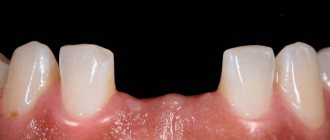Chronic stomatitis is a disease that is accompanied by repeated inflammatory processes of the oral mucosa. Many patients want to know what causes the development of chronic stomatitis. In the vast majority of cases, the development of this pathological condition is associated with a whole complex of various factors - both internal and external.
The most common form today is chronic aphthous stomatitis, which is diagnosed in 5% of cases among all diseases of the oral mucosa.
In our clinic you can get a free dental consultation!
Classification of stomatitis
Stomatitis in children and adults is classified according to the causative agent of the disease.
are distinguished:
- bacterial - caused by staphylococci and streptococci, which are constantly in the oral cavity and become pathogenic as a result of exposure to provoking factors;
- viral stomatitis in children and adults - caused by the herpes virus, manifested by vesicular rashes with transparent contents, which open after some time, forming erosions on the oral mucosa;
- fungal stomatitis in adults and children - usually occurs after antibiotic therapy or with a decrease in immunity, when increased growth of fungi from the genus Candida begins in the oral cavity, manifested by a white coating in the mouth;
- chemical stomatitis in adults and children - occurs after burns of the oral cavity with acid or alkali;
- Radiation stomatitis - appears as a result of exposure to radiation on the body, is a consequence of radiation sickness.
Concept and causes of the disease
Traumatic stomatitis is an inflammatory disease. Develops in the oral cavity against the background of prolonged and traumatic effects on the mucous membrane.
The focus is localized at the site of injury. It can be on the tongue, gums, teeth, soft palate, or the inner surface of the lips.
Pathology can occur at any age, but children are more susceptible to it. Possible reasons why stomatitis appears are divided into 3 groups:
- Mechanical damage. Traumatic lesions of this type are more common in children. The oral mucosa can be injured by a tooth fragment, tartar, dentures, when swallowing solid food or biting a hard object. Young children often bite the inside of their lip, and the affected area can become infected.
- Thermal damage. More often, damage to the oral cavity is associated with drinking too hot liquid or food. In some cases, traumatic stomatitis is a consequence of frostbite of the mucous membrane.
- Chemical damage. The mucous membrane can be damaged by a concentrated solution with an irritating effect, constant smoking, and frequent consumption of surrogate alcohol.
The greatest danger comes from chemical damage to previously injured areas. This combination of factors increases the risk of oral cancer.
Without timely treatment, the risk of various complications increases. In addition to oral cancer, it may be:
- keratinization of areas of the mucous membrane;
- the occurrence of papillomas;
- putrid odor from the mouth;
- painful enlargement of the affected area.
Causes of stomatitis
The main factors that can trigger the development of stomatitis are:
- allergies (to drugs, medications, toothpaste, etc.);
- lack of vitamins and microelements in the body;
- dryness of the oral mucosa;
- mechanical injuries to the mucous membrane from chipped teeth, incorrectly installed dentures, hard food, and so on, this leads to the formation of wounds on the mucous membrane through which the infection enters the body;
- bad habits;
- poor nutrition;
- non-compliance with oral hygiene rules;
- decreased immune defense of the body;
- violation of the microflora of the oral cavity (with hypovitaminosis, gastrointestinal diseases, after taking antibiotics);
- gastrointestinal diseases.
Stomatitis: symptoms
Symptoms for different types of stomatitis have their own characteristics, but there are signs that are common to all types of the disease. Typically, stomatitis begins with a slight redness of part of the mucosa. Redness may be single or multiple.
After some time, the area around the area of redness swells and becomes painful. Then an ulcer with smooth edges or a bubble with liquid inside forms at this place. If the ulcers are located nearby, then as the disease progresses they can merge with each other.
The ulcers are very painful, which significantly reduces the patient’s quality of life. In addition, there is bad breath, bleeding gums, and increased salivation. The pain intensifies when eating.
Most often, ulcers are localized on the soft palate, tonsils, inner surface of the lips, cheeks, on or under the tongue. Stomatitis usually goes away within 7-10 days, leaving no traces behind.
Symptoms
Traumatic stomatitis can be distinguished from other types only by knowing the background of its occurrence, since the manifestations of symptoms of the disease are quite typical for all types:
- At the site of injury, a slight swelling or bruise first appears, the skin turns red, swells, and slight tissue hyperemia may appear;
- gradually the painful sensations increase, over time it becomes difficult to open the mouth and chew food;
- ulcers, wounds, ulcers, blisters, erosions appear;
- with severe lesions, irreversible soft tissue necrosis may occur;
- as a result of an acid burn, a dense film forms over the damage;
- until the cause of injury is eliminated, the manifestation of symptoms of stomatitis can be wave-like;
- Severe cases of traumatic stomatitis may be accompanied by suppuration or fungal infection.
Diagnosis of stomatitis
The diagnosis is made based on examination of the patient's oral cavity. The symptoms of the disease are so obvious that usually no special additional research is required.
In some cases, to identify the type of causative agent of the disease, laboratory tests are prescribed - PCR smear, bacterial culture. If stomatitis appears frequently, is severe and long-lasting, then it is necessary to donate blood for glucose.
To prescribe the correct treatment, the doctor must clearly distinguish between different types of stomatitis.
Stomatitis: treatment
Treatment tactics depend on the general health of the patient and the form of stomatitis. During acute inflammation, it is necessary to follow a special diet aimed at minimizing injury to the oral mucosa. Food that is too hot or cold, spicy, hot, or hard food is prohibited.
Herpetic stomatitis is treated with antiviral agents. They suppress the activity of the virus and accelerate the healing of ulcers. Additionally, immunostimulants, multivitamins, and anti-inflammatory drugs are prescribed. Local treatment is required, which includes rinsing the mouth with antiseptic solutions.
In children, herpetic stomatitis is more severe, so symptomatic therapy (painkillers and antipyretics) is indicated.
For fungal forms of stomatitis, antifungal agents and rinsing the mouth with a weak soda solution are prescribed. For aphthous and traumatic stomatitis, chlorhexidine has a good effect; this antiseptic has little effect on viral forms of the disease.
For aphthous stomatitis, it is necessary to exclude allergenic foods from the diet (strawberries, citrus fruits, chocolate), as well as solid foods that can injure the mucous membrane. The lesions are treated with dental anti-inflammatory gels, which have an analgesic effect. In addition, the mouth is rinsed with herbal antiseptics.
Necrotizing ulcerative stomatitis is treated with antibiotics. In addition, metronidazole tablets and antihistamines are prescribed. This treatment is carried out in order to avoid the development of dangerous infectious complications.
In our online store you can purchase the following drugs for the treatment of stomatitis, which can be used as part of complex therapy for this disease:
- AngioTonic;
- Beta-Carotene;
- BromEnzyme;
- V-Complex;
- Coenzyme Q10;
- OsteoComplex;
- Zinc Chelate;
- Echinacea;
- Spray mouth freshener “N-ZIM”;
- N-ZIM toothpaste and a number of others.
Before using any drug, you should consult your doctor.
How to treat traumatic stomatitis?
Any damage associated with oral trauma heals faster in young, healthy people. In older people, the regeneration process takes longer. In this case, the use of auxiliary drugs is recommended. In patients with metabolic diseases such as diabetes, even minor damage can take a long time to heal.
The mucous membrane is more susceptible to injury due to colds, inflammation of the upper respiratory tract, in patients with gastroesophageal reflux disease and high acidity of the stomach, weakened immune systems, in children during the replacement of primary teeth and in patients receiving chemotherapy or radiation therapy.
An effective product to support treatment of the effects of oral trauma should:
- reduce and preferably eliminate pain;
- accelerate the healing and anti-inflammatory effect;
- isolate changes from possible sources of infection;
- be easy to use and mitigate injuries of various origins.
Pharmacists recommend an antiseptic or topical anti-inflammatory spray to treat mouth ulcers. Symptomatic treatment may include using a warm saline mouth rinse, chlorhexidine rinse, or using benzydamine. It is necessary to visit a dentist to determine and eliminate the source of the injury.
The oral epithelium should recover within a few days after treatment. However, if the ulcer persists for more than three weeks, patients should be referred to their GP or dentist to rule out the presence of cancer.
Topical medications:
- saline mouth rinse.
A salt water mouthwash, made by dissolving half a teaspoon of salt in a glass of warm water, should be used as a frequent rinse until the discomfort and swelling subsides;
- antiseptic mouthwash or spray.
Chlorhexidine gluconate 2 mg/ml (0.2%) mouthwash or spray (sugar-free) is used twice daily as directed (10 ml over one minute). Should not be used within 30 minutes of using toothpaste due to possible interaction (and it may cause an unpleasant taste in the mouth);
- nonsteroidal anti-inflammatory mouthwash or spray.
Benzydamine hydrochloride 1.5 mg/ml (0.15%) as a mouthwash or spray (sugar-free) is used four times daily as directed (15 ml as a rinse or four sprays every 1.5 hours for as necessary);
- hydrocortisone sodium succinate mucoadhesive buccal tablet 2.5 mg is used as directed (one tablet dissolved near the ulcer four times daily). Contraindicated for use in children under 12 years of age and should be used only for medical reasons.
Medicines should be used only as prescribed by a doctor. Self-administration of medications can lead to serious consequences for the body!
Prevention of stomatitis
Stomatitis, the symptoms and treatments of which are described above, can be prevented.
Prevention of stomatitis includes:
- maintaining oral hygiene;
- rejection of bad habits;
- strengthening the immune system, hardening the body;
- timely treatment of oral diseases;
- periodic sanitation of foci of chronic infection in the body;
- proper nutrition;
- preventing injury to the oral mucosa;
- avoiding stress;
- periodic preventive examinations at the dentist.
Health to you!
Treatment of bacterial stomatitis in children
For treatment, oxolinic ointment and chlorophyllipt solution are often used.
When healing begins, the wounds are lubricated with rosehip oil, Kalanchoe juice with aloe, propolis, and so on.
Frequent rinsing with furatsilin, chamomile solution, potassium permanganate and even strong tea will help.
Prevention of stomatitis
The following are suitable preventive actions:
- Compliance with established hygiene rules;
- treat your teeth in a timely manner;
- constant washing of hands, toys, dirty objects;
- teeth cleaning;
- regularly visit your child's dentist;
- hardening;
- a diet that involves eating without sugar;
- frequent walks in the fresh air.
The main thing is to see a professional dentist and find out the type of disease, the causes, and get the most accurate recommendations for treatment.
Share:
